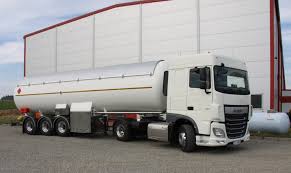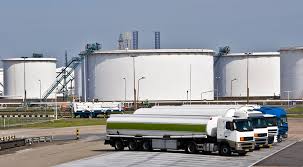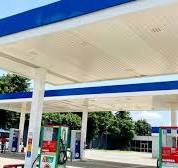Liquefied Petroleum Gas (LPG) Trucking Business in Nigeria; The Feasibility Report.

Petroleum products are among the most valuable natural resources abundantly available in our country. Nigerians and people everywhere use petroleum products as a fuel in their automobiles, generating sets, industrial plants and for cooking purposes, thus making petroleum products an essential commodity that is needed for the daily operations of individual, industrial and national activities.
Undoubtedly a vast investment potential exists in the domestic liquefied petroleum gas filling sub-sector of the oil & gas industry in Nigeria. A large proportion of the middle and upper socio-economic class of people depend on gas for cooking purposes. So are industries, government establishments, hotels, hospitals, restaurants, bakeries e.t.c
A statistic for the country some years ago showed that a mere five percent (5%) of the consumption potentials of liquefied petroleum gas (LPG) were attained. It is therefore evident that we have a long way to saturate the Nigerian liquefied petroleum gas (LPG) market if it were to be fully developed because if a domestic consumer is sure of getting liquefied petroleum gas (LPG) when and where he needs it at the right price, he would most willingly convert from firewood, coal or kerosene to liquefied petroleum gas (LPG).
With huge gas reserves of one hundred and eighty-five trillion (185,000,000,000,000) cubic feet and the Nigerian government’s strong commitment to developing the gas industry through the Gas Master Plan, there are a lot of emerging opportunities for investors in the sub- sector.
With less than one (1) kilogramme per capita consumption, Nigeria ranks among the lowest liquefied petroleum gas consuming states in Africa despite its huge gas resources.
Since around 2007 till now, liquefied petroleum gas (LPG) demand/supply market in Nigeria has grown from a mere seventy thousand (70,000) MT/annum market to over six hundred thousand (600,000) MT/Annum, pulling along with it, massive investments in liquefied petroleum gas (LPG) infrastructure along the value chain.
Along with growth in the market, the liquefied petroleum gas (LPG) market in the last ten to twelve (10-12) years as witnessed the development of over five (5) privately financed, owned and operated liquefied petroleum gas (LPG) coastal terminals in Lagos, Calabar and Port Harcourt, with total storage in excess of thirty-five thousand (35,000) MT, along with liquefied petroleum gas (LPG) ship loading/offloading jetties, liquefied petroleum gas (LPG) cylinder bottling plants, liquefied petroleum gas (LPG) mini plants, liquefied petroleum gas (LPG) road delivery tankers which have particularly seen a growth from less than 100 trucks twelve (12) years ago to over one thousand and fifty (1,050) as at last count in 2017.
The above does not include the effort made by Nigerian National Petroleum Corporation (NNPC), with the revival of the nine liquefied petroleum gas (LPG) Butanization plants strategically located in major cities and towns in across Nigeria’s geo-political regions, adding nine thousand (9,000) MT to its already existing four thousand, five hundred (4,500) MT storage terminal in Apapa-Lagos, and returning them to profitable operations.
So in all, Nigeria’s coastal and inland liquefied petroleum gas (LPG) terminals can boast of aggregate storage capacity over fifty thousand (50,000) MT as at today.
More succinctly, a captive market of over one hundred and eighty (180,000,000) million people makes investment in liquefied petroleum gas (LPG) bottling plant viable since one of the challenges the Federal Government as well as liquefied petroleum gas (LPG) operators are forced to grapple with is how to popularize the use of cooking gas in Nigeria therefore , forward thinking investors interested in the Nigerian oil and gas industry will make money from building cooking gas filling plants because liquefied petroleum gas (LPG) is a domestic product that will eventually replace kerosene in the country due to its environmental friendly nature.
The product would be sourced from tank farms / depot and same would be supplied to liquefied petroleum gas (LPG) stations and manufacturing companies.
The company would start operations with two (2) fairly used twenty-seven (27) tons trucks, each making two (2) deliveries of twenty-five (25) tons each of liquefied petroleum gas (LPG) in a week.
This report highlights the financial viability or otherwise of establishing a liquefied petroleum gas (LPG) supply and distribution company in Nigeria.
Table of Contents
EXECUTIVE SUMMARY 1.0 Business Overview 1.1 Description of the Business 1.2 Vision and Mission Statement 1.3 Business Objective 1.4 Critical Success Factor of the Business 1.5 Current Status of Business 1.6 Description of the Business Industry 1.7 Contribution to Local and National Economy 2. Marketing Plan 2.1 Description of product 2.2 The Opportunity 2.3 Pricing Strategy 2.4 Target Market 2.5 Distribution and Delivery Strategy 2.6 Promotional Strategy 2.7 Competition 3. Production Plan 3.1 Description of the Location 3.2 Raw Materials 3.3 Equipment 3.4 Production Cost 3.5 Stock Control Process 3.6 Pre-Operating activities and expenses 3.6.1 Operating Activities and Expenses 3.7Project Implementation Schedule 4.0 Organizational and Management Plan 4.1 Ownership of the business 4.2 Profile of the promoters 4.3 Key Management Staff 4.3.2 Management Support Units 4.4 Details of salary schedule 5. Financial Plan 5.1 Financial Assumption 5.2 Start up Capital Estimation 5.3 Source of Capital 5.4 Security of Loan 5.5 Loan Repayment Plan 5.6 Profit and Loss Account 5.7 Cash Flow Analysis 5.7 Viability Analysis 6.0 Business Risk and mitigation factor 6.1 Business Risks 6.2 SWOT Analysis
Project Specification:
Additional Info
Get this Report
Direct bank transfer
To order the report, Please do pay the sum of ₦30,000 into
Account Name : Foraminifera Market Research Ltd
Account Number : 274 20 569 37
Account Name : Foraminifera Market Research Ltd
Account Number : 101 76 603 95
Account Name : Foraminifera Ventures
Account Number : 011 66 066 32
Make your payment directly into our bank account. Please use your Order ID as the payment reference. Your order will not be shipped until the funds have cleared in our account.
Instructions
After payment call us on 01 -29 52 413 / 08033782777 or email us at foraminiferamarketresearch@yahoo.com with the payment details. After payment confirmation, the soft copy of the report would be sent to you within 24 hours.



